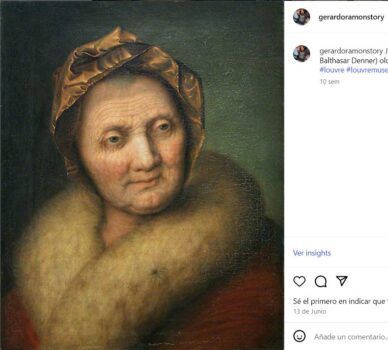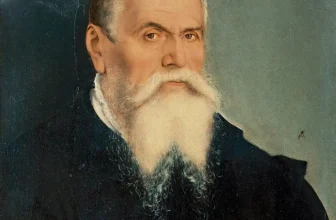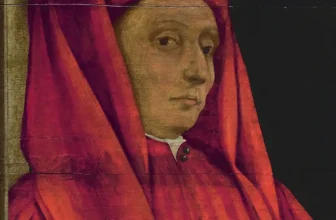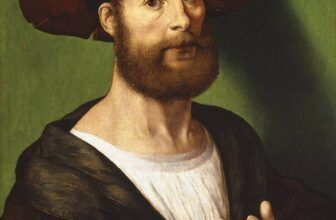| Invest in Hidden Masterpiece: Rare Antique Oil Paintings For Sale. Limited Originals Available 💰😊 Are you looking for authentic hidden masterpiece? Explore old master antique oil paintings from the Renaissance and Baroque eras. From 16th-century portraits to 18th-century landscapes. Authenticity guaranteed, Old Master antique oil paintings for sale. Shop Now! 🎨 Renaissance And Baroque Art Landscape Antique Paintings Old Master Portrait Paintings |
Instagram image @gerardoramonstory twitter @davinci2097
Johann Joseph Achermann’s Old Woman
Art history is filled with celebrated masters, but it is often the lesser-known painters who leave behind hidden gems that invite us to pause, reflect, and rediscover forgotten brilliance. One such figure is Johann Joseph Achermann (1791–1834), a Swiss painter whose works captured the soul of early 19th-century Europe. Among his surviving paintings, one stands out with quiet dignity and remarkable humanity: Old Woman.
This painting, though not as famous as the works of great contemporaries such as Jacques-Louis David or Francisco Goya, has garnered renewed attention in recent years for its honesty, sensitivity, and timeless portrayal of age. In this post, we will explore the story of Johann Joseph Achermann, the significance of Old Woman, the type of art it represents, and where this poignant portrait can be found today.
Who Was Johann Joseph Achermann?
Johann Joseph Achermann was born in 1791 in Switzerland, during a time of immense cultural and political upheaval in Europe. The French Revolution had reshaped borders and ideas, and the Napoleonic Wars influenced every corner of the continent. Amid these shifting times, Achermann pursued art not as an expression of grandeur, but as an exploration of the human spirit in everyday life.
Achermann received his early training in Switzerland before furthering his education in Italy and Germany. Italy, the cradle of Renaissance art, provided him with exposure to the masterpieces of Michelangelo, Raphael, and Caravaggio. Germany, particularly Munich, became a hub for artists seeking to balance classical traditions with Romantic ideals. Achermann absorbed both influences, creating a body of work that reflected academic rigor while also embracing the expressive tendencies of Romanticism.
Unlike some of his contemporaries who devoted themselves to mythological scenes or grand historical canvases, Achermann often painted portraits and figures from ordinary life. His works focused on sincerity rather than spectacle. In this sense, he belongs to a lineage of artists who valued truth, intimacy, and psychological depth.
Unfortunately, Achermann’s life was short; he passed away in 1834 at the age of 43. His premature death, combined with limited circulation of his works, meant that his name never rose to international fame. Yet, pieces like Old Woman stand as testaments to his artistry and vision.
At first glance, Achermann’s Old Woman might appear to be a simple portrait of an elderly sitter. Yet, the more one studies it, the more layers of meaning emerge.
The subject is an unnamed elderly woman, depicted with meticulous attention to detail. Her face bears the marks of time—wrinkles, sagging skin, and the softened glow of age. Unlike many portraits of the period that idealized youth or flattered the sitter, Achermann painted his subject with unflinching realism. Every line of her face is honored, not hidden.
But Old Woman is far from a clinical study of aging. Achermann imbues the portrait with warmth and dignity. The woman’s expression is contemplative, even serene, as if she is gazing inward at a lifetime of memories. Her clothing is modest, suggesting she was not a figure of wealth or aristocracy, but an ordinary person. This choice speaks volumes about Achermann’s artistic intent: to elevate the beauty of everyday humanity.
The painting is also about universality. We do not know the woman’s name, but her presence feels familiar. She could be anyone’s grandmother, a neighbor, or a passerby from a village street. In celebrating her ordinariness, Achermann achieves something extraordinary—he reminds us of the dignity inherent in every human life, regardless of age or social status.
Some art historians interpret the painting as a meditation on mortality and the passage of time. In the Romantic period, themes of transience, memory, and the cycle of life were prevalent. By choosing an elderly subject, Achermann aligns himself with these reflections. The painting becomes not just a likeness of one woman, but a broader commentary on aging as a natural, inevitable, and profoundly human experience.
What Type of Art Is Old Woman?
Achermann’s Old Woman belongs to the tradition of portraiture, specifically realist portraiture with Romantic undertones.
Realism
The work is grounded in realism because of its faithful representation of the sitter. Achermann avoids excessive embellishment or idealization, choosing instead to present the woman as she truly appeared. This focus on truth and accuracy makes the work an important example of early 19th-century realist tendencies.Romanticism
At the same time, there are subtle Romantic qualities in the painting. Romanticism often sought to reveal the inner emotional world of its subjects. In Old Woman, the sitter’s expression, posture, and quiet dignity evoke deep emotion, transcending mere likeness to convey a sense of character and soul.Genre and Style
Stylistically, the painting sits at the intersection of academic portraiture and genre painting. While portraits of the wealthy or powerful were common in the era, depicting an elderly common woman as a subject worthy of art was a radical gesture. This aligns Achermann with artists like Jean-Baptiste Greuze or Wilhelm Leibl, who celebrated the humanity of everyday figures.
In sum, Old Woman is not a grandiose work meant for palace halls, but an intimate portrait that resonates on a personal, almost spiritual level.
Where Is Old Woman Located?
Johann Joseph Achermann’s Old Woman is currently housed in the Kunstmuseum Luzern (Lucerne Museum of Art) in Switzerland. The Kunstmuseum Luzern is one of the country’s premier art institutions, renowned for its collection that bridges Old Masters with modern and contemporary works.
The museum provides the perfect home for Old Woman, allowing it to be appreciated not only as a product of its time but as part of a larger dialogue in Swiss art history. Visitors can encounter the painting alongside works by other Swiss masters, situating Achermann within the cultural fabric of his homeland.
For those who cannot visit Lucerne in person, digital reproductions of the work have circulated online, ensuring that Achermann’s vision continues to inspire new generations. Still, nothing quite compares to seeing the original in person, where the textures of the brushstrokes and the depth of the subject’s gaze come alive in a way photographs cannot capture.
The Enduring Legacy of Old Woman
Though Achermann remains relatively obscure in the broader canon of European art, Old Woman exemplifies the enduring power of portraiture. It demonstrates that great art need not depict kings, queens, or mythological heroes. Sometimes, the most profound beauty lies in the ordinary faces around us.
In our fast-paced modern world, where youth is often glorified and age overlooked, Achermann’s painting carries an even more urgent relevance. It asks us to pause, look closely, and find grace in the stories written on every human face.
For Achermann, who lived a short life, the act of capturing another’s long life on canvas becomes a powerful statement. His art becomes a bridge across centuries, allowing us in the 21st century to connect with both the artist and his subject in a shared human experience.
Johann Joseph Achermann’s Old Woman is more than just a portrait; it is a meditation on time, dignity, and the universality of human life. Achermann himself, a Swiss painter shaped by both classical and Romantic traditions, gave the world a work that stands out for its realism, tenderness, and honesty.
Classified within the genre of realist portraiture with Romantic undertones, the painting resists the vanity and grandeur of many early 19th-century works. Instead, it elevates an ordinary sitter into an extraordinary symbol of humanity.
Today, housed in the Kunstmuseum Luzern, Old Woman continues to invite reflection from all who encounter it. It serves as a reminder that art’s true power lies not in depicting the exceptional, but in revealing the profound beauty of the everyday.
Remembering Johann Joseph Achermann and his Old Woman, we honor not only the artist’s legacy but also the quiet strength of the unnamed woman who became immortal on his canvas.





